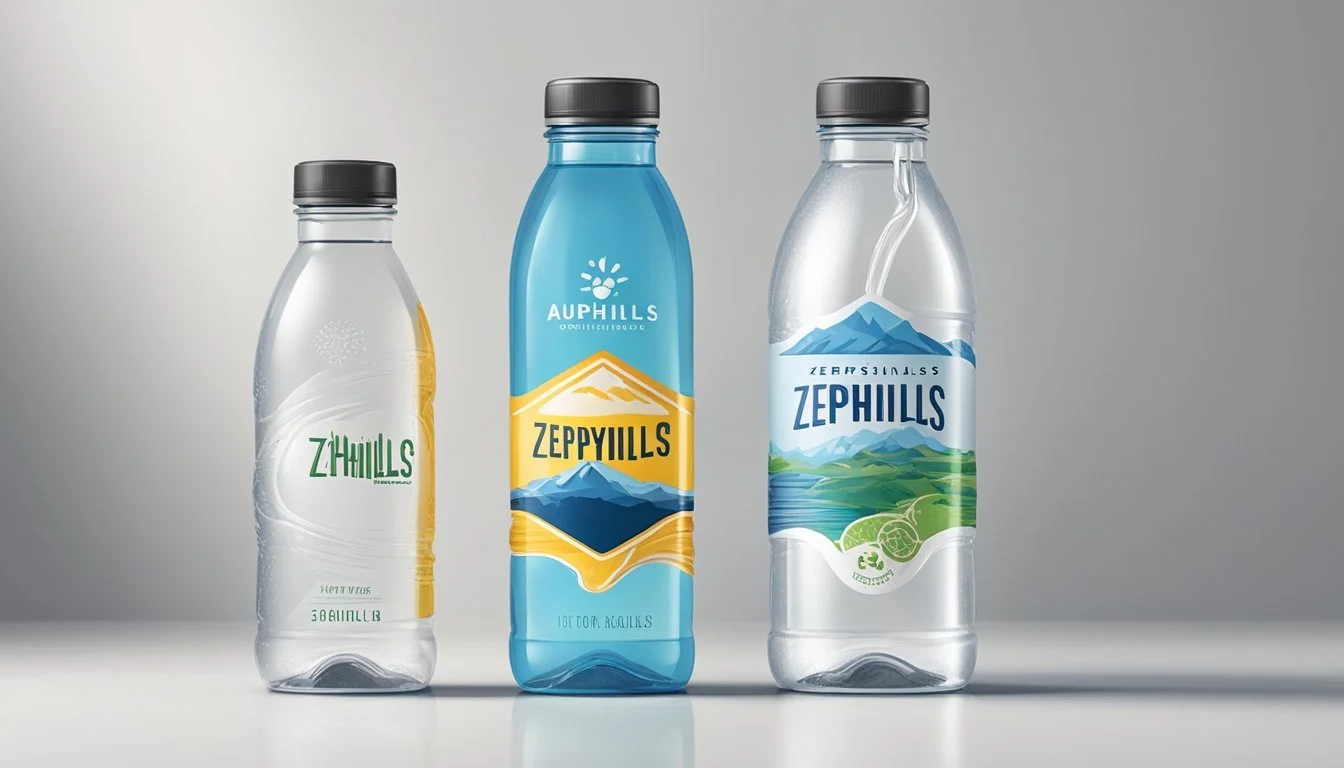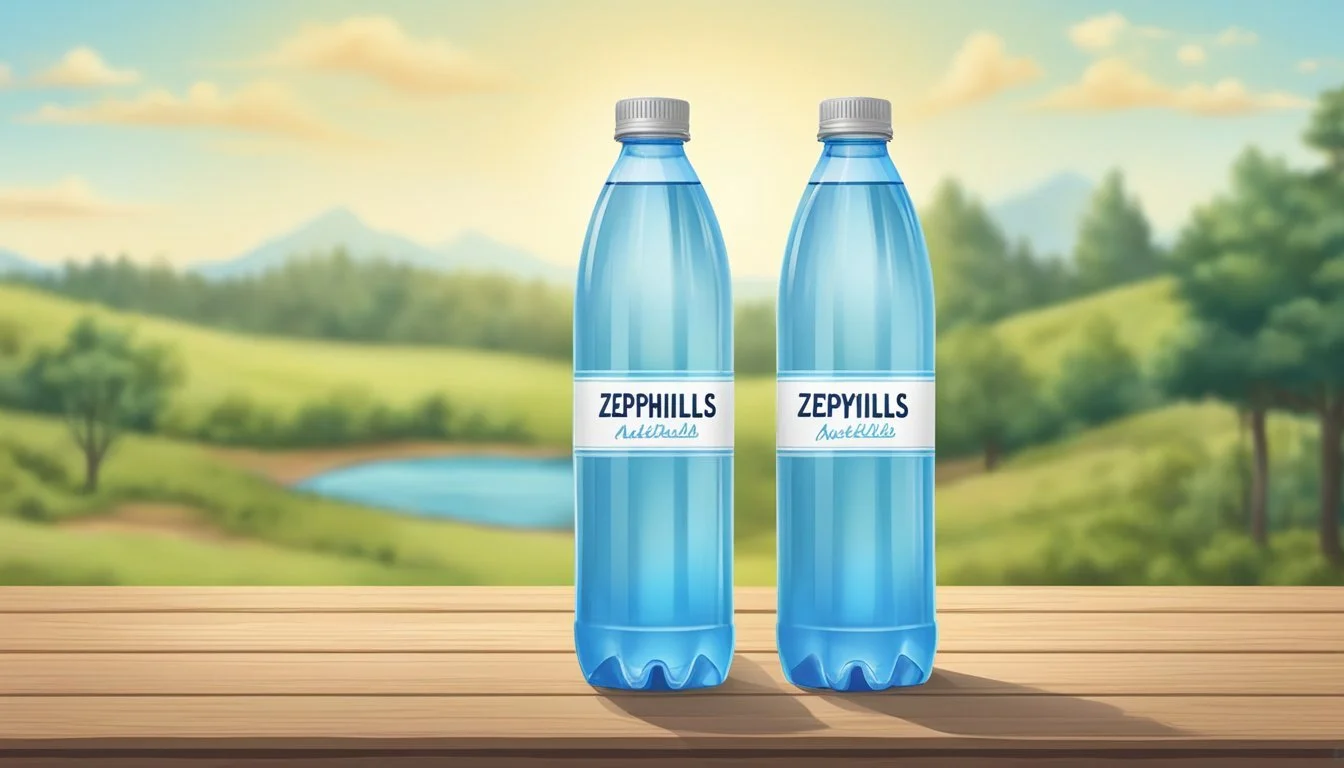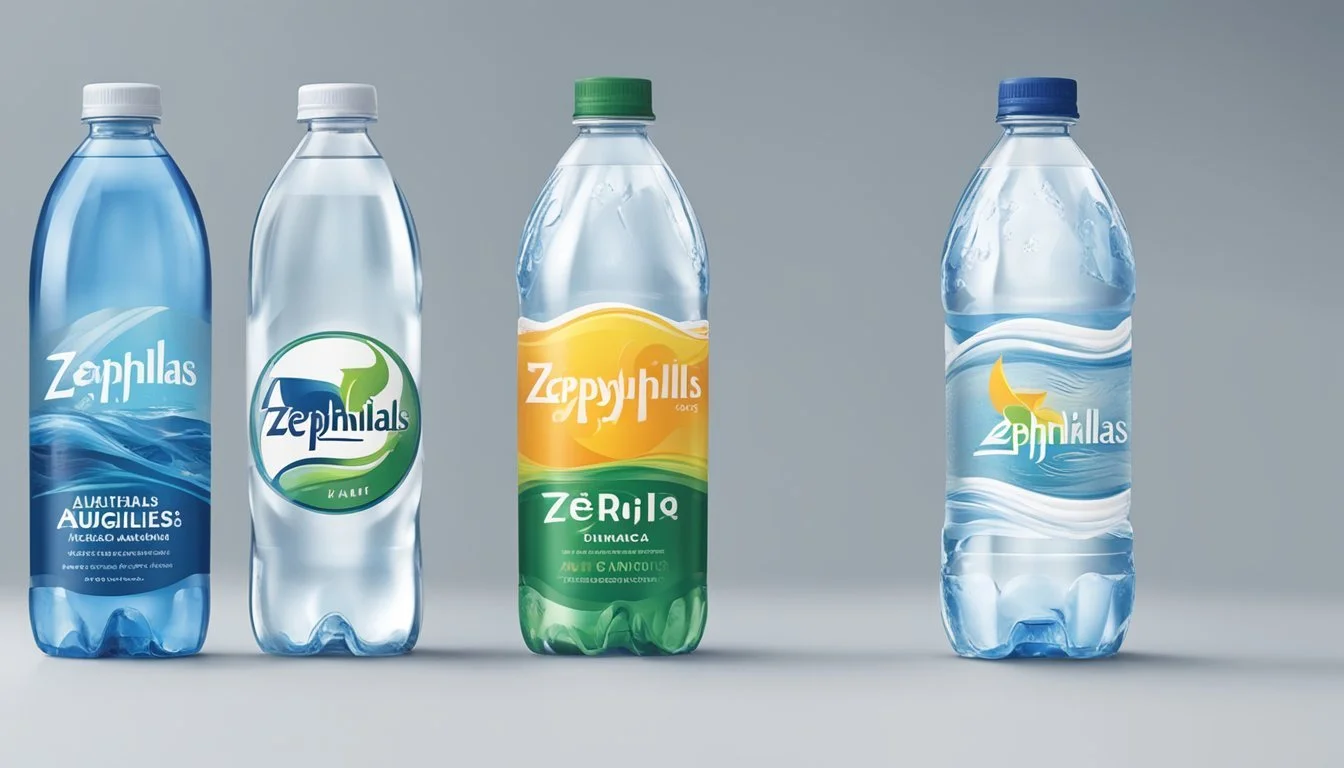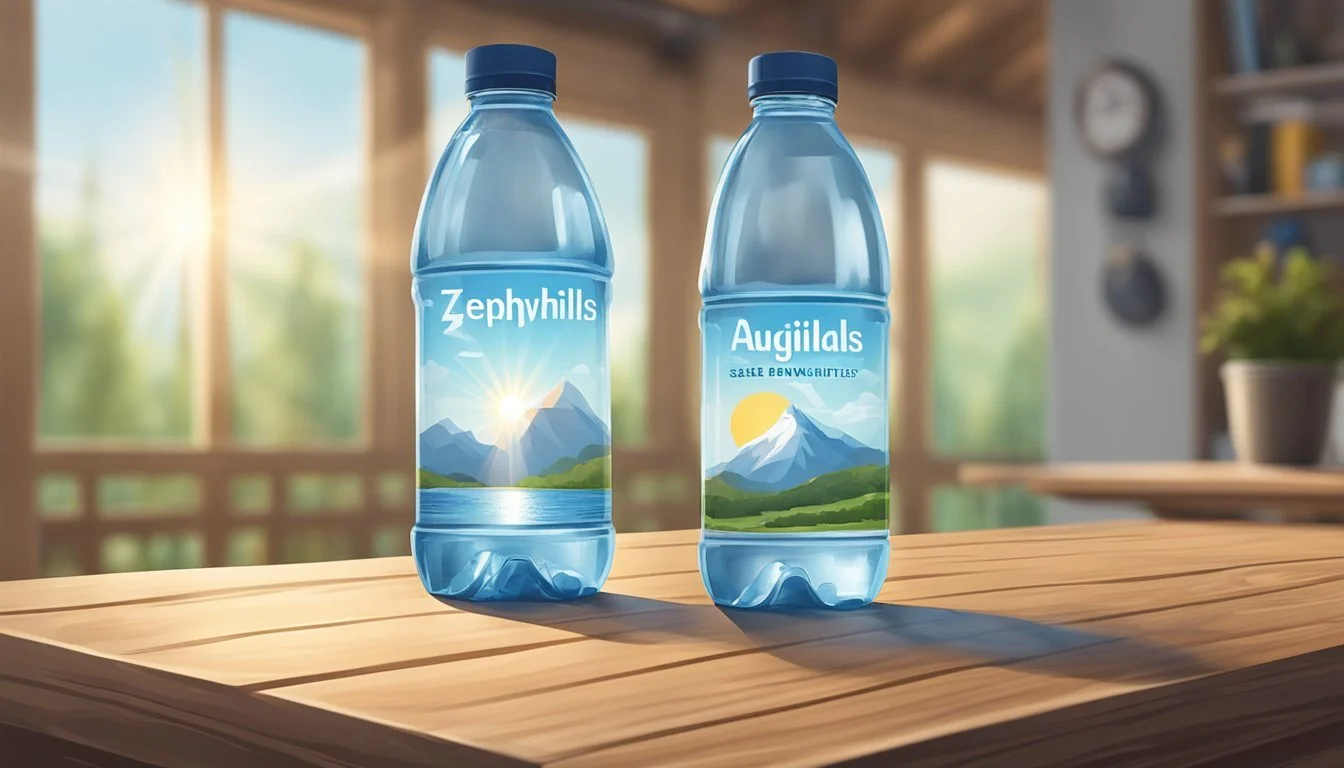Zephyrhills vs. Augi
Comparing Quality, Taste, and Value
When it comes to bottled water, the debate between Zephyrhills and Augi often arises among enthusiasts and casual drinkers alike. Zephyrhills, sourced from Florida springs, undergoes extensive purification processes including micro-filtration and UV treatment. This ensures a clean and refreshing taste with the added benefit of essential minerals.
Augi, on the other hand, is known for its crisp purity. It also employs advanced filtration techniques, providing a refreshing and clean-tasting water that many aficionados prefer. When comparing Zephyrhills to Augi, it becomes clear that both offer high-quality hydration, but the choice ultimately depends on individual taste preferences and environmental considerations.
Readers will appreciate the detailed comparison ahead, delving into the nuances that set these two brands apart. Whether gravitating towards the mineral-rich profile of Zephyrhills or the pristine clarity of Augi, both options promise reliable and enjoyable hydration.
Understanding Bottled Water
Bottled water has become a staple for many, thanks to its convenience, perceived purity, and variety. This section explores the historical evolution, types available, and the current market landscape of bottled water.
History and Evolution of Bottled Water
Bottled water dates back to the 17th century with the commercialization of spa waters. The practice began in Europe, where mineral-rich waters from natural springs were bottled for their believed health benefits. Over time, this evolved into a global industry, especially with advancements in purification technologies in the 20th century.
The rise of major brands like Coca-Cola’s Dasani and PepsiCo’s Aquafina underscored the shift towards purified tap water. The 21st century saw the introduction of premium waters like Essentia, which focuses on ionization and high pH levels.
Categories of Bottled Water
Bottled water can be classified into several categories based on its source and processing:
Natural Spring Water: Sourced directly from natural springs, often containing naturally occurring minerals.
Purified Water: Usually sourced from tap water that has undergone purification processes like reverse osmosis.
Mineral Water: Contains specific amounts of natural minerals and is bottled at the source.
Alkaline Water: Higher pH levels, often achieved through ionization processes.
Sparkling Water: Carbonated water, which can be natural or artificially carbonated.
Zephyrhills represents natural spring water, while Augi offers minimally processed, naturally sourced water.
Market Overview
The bottled water market is extensive, with major players like Nestlé, Coca-Cola, PepsiCo, and Starbucks competing for consumer preference. Each brand focuses on different selling points:
Zephyrhills emphasizes its natural spring origin and mineral content.
Aquafina and Dasani highlight their purification processes and widespread availability.
Essentia targets health-conscious consumers with its alkaline water.
The market dynamics are influenced by consumer preferences for hydration, quality, and convenience, alongside growing awareness of environmental impacts.
Bottled water sales continue to grow, driven by diverse options that cater to various tastes and health needs.
Sourcing and Purity
When choosing bottled water, consumers often consider the source of the water and the purification processes it undergoes. Understanding these aspects can help determine which brand may be better suited for individual health needs and environmental concerns.
Natural Sources of Bottled Water
Augi and Zephyrhills source their waters differently. Zephyrhills water comes from natural springs in Florida, leveraging natural groundwater that is rich in minerals. It is marketed as pure and clean spring water. This sourcing method supports the idea of natural purity and sustainability.
Augi, on the other hand, uses municipal water from Leesburg, Virginia. Though not from a spring, it relies on rigorous municipal treatment standards before additional purification steps are added. Both sources aim to provide safe and clean drinking water, but their origins differ significantly.
Purification Processes
Zephyrhills relies primarily on its natural filtration through limestone formations, which enriches the water with minerals. Once collected, it undergoes basic filtration to remove any potential contaminants. This ensures the water retains its natural mineral content while maintaining a clean profile.
Augi undergoes a more complex purification process since it starts as municipal water. This often involves reverse osmosis, several stages of filtration, and additional treatments to remove chlorine, heavy metals, and other contaminants. This extensive process ensures Augi water is pure and clean before bottling, even if it lacks the natural mineral content of spring water.
Regulatory Standards and Safety
Both Zephyrhills and Augi comply with stringent FDA regulations for bottled water safety. Zephyrhills, as a spring water brand, adheres to standards for naturally occurring mineral content and environmental impact on spring sources. Regular EPA testing ensures the water remains free of contaminants.
Augi's municipal source must meet both local water quality standards and additional purification benchmarks set by the FDA. These processes guarantee that the bottled water is safe for consumption. Both companies commit to maintaining high standards to protect consumer health and uphold safety regulations.
Zephyrhills vs. Augi: Side-by-Side Comparison
Zephyrhills and Augi represent distinct choices in the bottled water market, differing in aspects such as source, origin, taste profile, and overall quality. This comparison aims to explore these differences and provide clear insights for consumers.
Source and Origin
Zephyrhills sources its water from springs located in Florida. This natural spring water is collected with attention to environmental management, ensuring sustainable spring sources.
Augi water, on the other hand, comes from underground aquifers. These aquifers are well-protected, contributing to the purity and mineral content of the water. The process of extraction and bottling ensures that Augi maintains high purity standards.
Both brands emphasize natural sources, but Zephyrhills highlights its connection to Florida's natural springs, while Augi focuses on the depth and protection of its aquifers.
Taste Profile and Quality
The taste of Zephyrhills water is often described as clean and refreshing, with a balanced electrolyte content. The pH level of Zephyrhills typically ranges from 7.0 to 7.6, supporting its clean taste and natural mineral balance.
Augi water offers a crisp and pure taste, partly due to its rigorous purification processes. Augi does not add extra minerals artificially, relying instead on its natural mineral composition to deliver a consistent and high-quality taste experience.
In terms of quality, both Zephyrhills and Augi maintain stringent quality control measures. Zephyrhills' focus on natural spring water and Zephyrhills' emphasis on protected aquifers contribute to their reputations for delivering reliable and enjoyable hydration options.
Health Implications
Choosing between Zephyrhills and Augi bottled water involves considering how each brand impacts health, focusing on mineral content and suitability for daily intake.
Minerals and Hydration
Zephyrhills draws from natural Florida springs and undergoes natural filtration. This water contains calcium, magnesium, and potassium, which are essential for maintaining bone health, muscle function, and electrolyte balance. These minerals can contribute to overall hydration and wellness.
Augi, a purified water, typically includes added electrolytes. Though often containing sodium and potassium, the specific mineral balance in Augi may vary depending on the source and purification process. Both types of water aim to support hydration, but the presence of natural minerals in Zephyrhills might offer distinct health benefits.
Considerations for Daily Consumption
Zephyrhills is rated ‘B’ due to its balanced mineral content and rigorous purification process. Consumers can drink this water daily, benefiting from its natural mineral content that supports health without significant contaminants.
Augi, being purified water, generally involves rigorous filtration to remove impurities, making it safe for daily consumption. It is crucial for consumers to check the specific mineral additions in Augi to ensure they meet individual health needs.
Daily intake of bottled water hinges on personal health requirements. Zephyrhills' natural minerals cater to those needing more dietary calcium and magnesium, while Augi's customizable electrolytes can address specific hydration needs. Each brand provides safety and purity, supporting overall health and hydration.
Environmental Impact and Sustainability
Evaluating the environmental impact of bottled water requires examining the bottling process and addressing plastic waste management. Both Zephyrhills and Augi use specific methods to minimize their carbon footprint and improve sustainability.
Bottling Process and Carbon Footprint
Zephyrhills sources its water from Florida springs and implements energy-efficient purification techniques. This process involves micro-filtration, ozone disinfection, reverse osmosis, and UV treatment. Despite its rigorous purification steps, converting spring water into bottled water still contributes to the product's carbon footprint. Their commitment includes managing sustainable spring sources to reduce environmental impact.
Augi follows a different approach by using local groundwater sources. The company emphasizes minimizing transport distances to decrease carbon emissions. Augi's bottling facilities are designed with eco-friendly features, such as energy-efficient machinery and renewable energy usage. These practices aim to lower their carbon footprint while maintaining water quality.
Plastic Waste and Recycling Efforts
Plastic waste remains a critical concern for both brands. Zephyrhills has focused on using recycled plastic (rPET) for their bottles, which helps decrease waste and promotes sustainability. Additionally, their packaging encourages consumers to recycle, contributing to overall plastic waste reduction efforts. Zephyrhills' commitment is reflected in their continuous improvement of the recyclability of their products.
Augi strives to balance convenience with environmental responsibility by using biodegradable plastic alternatives in some of their products. Their recycling initiatives include partnerships with community programs to enhance recycling rates. Augi's dedication to using portable and environmentally friendly packaging options shows a proactive approach to addressing plastic waste concerns.
Both brands place significant emphasis on reducing their environmental impact through sustainable practices and recycling efforts. Their approaches highlight the importance of eco-friendly choices in the bottled water industry.
Brand Initiatives and Consumer Trust
When evaluating Zephyrhills and Augi bottled water brands, it's crucial to examine their corporate responsibility and transparency, alongside customer satisfaction and loyalty.
Corporate Responsibility and Transparency
Zephyrhills sources its spring water from natural springs in Florida. The brand emphasizes sustainable practices, including maintaining the natural landscapes around their springs. Zephyrhills incorporates environmentally friendly packaging, aimed at reducing plastic waste.
Augi, in contrast, gets its water from the municipal supply of Leesburg, Virginia, and undergoes a purification process. Though some find the slight sulfuric taste unusual, Augi remains committed to transparency about its water source and purification methods. Augi’s efforts in reducing the environmental impact are apparent through their initiative to use recyclable materials.
Both brands have distinct strategies. Zephyrhills focuses on natural sourcing and preserving spring environments, while Augi ensures clarity about its municipal sourcing and purification methods.
Customer Satisfaction and Loyalty
Zephyrhills customers appreciate the brand for its taste and the balanced mineral content. The water’s pH level, ranging from 7.0 to 7.6, is also a favorable feature. Regular customers are inclined to trust Zephyrhills due to its consistent quality and commitment to environmental sustainability.
Augi, though comparatively lesser-known, has built a niche following. Its dedication to purity and transparency regarding its water source has garnered trust, despite the unique taste profile. Customers looking for local, purified water recognize Augi for its honesty and eco-friendly packaging.
In the battle of Zephyrhills vs. Augi, understanding these brand initiatives and consumer trusts can provide valuable insights into why customers might prefer one over the other.
Packaging and Convenience
When comparing Zephyrhills and Augi bottled waters, it is essential to consider their packaging and convenience. Factors such as the types of bottles and their portability, as well as the variety of options and flavors available, play a crucial role in determining which brand may better suit your needs.
Types of Bottles and Portability
Zephyrhills offers a wide range of bottle sizes, from small 8-ounce bottles to larger 1-gallon jugs. These options provide flexibility for different occasions, whether on the go or at home. Additionally, Zephyrhills uses both plastic and reusable glass bottles, catering to consumers concerned about environmental impact.
Augi, on the other hand, focuses on core hydration and portability. Augi water is typically available in lightweight, easy-to-carry plastic bottles. This makes it a convenient option for those leading active lifestyles. Although Augi does not offer glass bottle options, the brand emphasizes eco-friendly practices through recyclable materials.
Variety and Flavors
Zephyrhills stands out by offering a plethora of water varieties, including sparkling and flavored options. Their flavors range from subtle hints of fruit to more pronounced tastes, providing consumers with a diverse selection. This variety is appealing for those looking to enjoy different hydration experiences.
Augi keeps it simple with fewer variations, focusing on pure, naturally sourced water. While Augi doesn't offer flavored options, it appeals to purists who prioritize quality over variety. This straightforward approach aligns with Augi’s branding as a premium water choice, comparable to brands like Acqua Panna and SmartWater.
Conclusion
When comparing Zephyrhills and Augi, several factors stand out. Zephyrhills is recognized for its spring water origins and natural mineral content. Its balanced pH level ranging from 7.0 to 7.6 makes it a popular choice among consumers who value natural water sources.
Augi, on the other hand, focuses on purified water, often enhanced with minerals to improve taste. This positions it against other purified brands like LIFEWTR and Ethos Water.
In terms of availability, Zephyrhills holds regional prominence, especially in Florida, similar to Poland Spring in the Northeast. Augi aims for broader market penetration, competing with brands like Fiji Water and Eternal Water.
Taste preferences vary, but some find Zephyrhills' natural flavor more refreshing compared to Augi's cleaner, purified taste. In this respect, Augi aligns more closely with Boxed Water and Penta.
Pricing also plays a role. Zephyrhills is often seen as an affordable option, akin to Arrowhead and Ice Mountain, whereas Augi's pricing might reflect its purification process and added minerals.
Environmental concerns are unavoidable in these comparisons. Augi might appeal to eco-conscious consumers looking for brands such as Flow or Mountain Valley, known for their sustainability practices.
Health-conscious individuals often consider the electrolyte content and the presence of essential minerals. Zephyrhills offers naturally occurring minerals, similar to Deer Park and Mountain Valley, while Augi enhances its water to achieve a desirable mineral profile.
Both brands promise quality hydration, but consumer choice ultimately hinges on taste preference, mineral content, price, and environmental impact.
More About Zephyrhills
Core Hydration vs Zephyrhills: Which Bottled Water is Better?
Icelandic Glacial vs Zephyrhills: Which Bottled Water is Better?
Mountain Valley Spring Water vs Zephyrhills: Which Bottled Water is Better?
Nestle Pure Life vs Zephyrhills: Which Bottled Water is Better?
Poland Spring vs Zephyrhills: Which Bottled Water is Better?
San Pellegrino vs Zephyrhills: Which Bottled Water is Better?
Zephyrhills vs Aqua Carpatica: Which Bottled Water is Better?
Zephyrhills vs Cascade Mountain: Which Bottled Water is Better?
Zephyrhills vs Crystal Geyser: Which Bottled Water is Better?
Zephyrhills vs Hawaii Volcanic: Which Bottled Water is Better?
Zephyrhills vs Hawaiian Springs: Which Bottled Water is Better?
Zephyrhills vs Kirkland Signature: Which Bottled Water is Better?
Zephyrhills vs Purely Sedona: Which Bottled Water is Better?
Zephyrhills vs Richard's Rainwater: Which Bottled Water is Better?
Zephyrhills vs Solan de Cabras: Which Bottled Water is Better?
Zephyrhills vs Talking Rain AQA: Which Bottled Water is Better?
Zephyrhills vs Whole Foods 365: Which Bottled Water is Better?
Zephyrhills vs Whole Foods Italian Still Mineral water: Which Bottled Water is Better?









